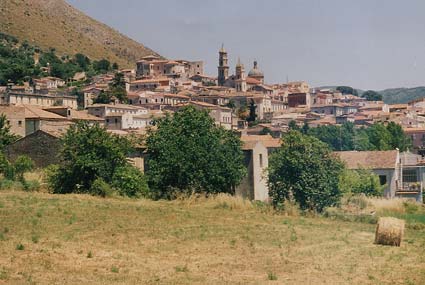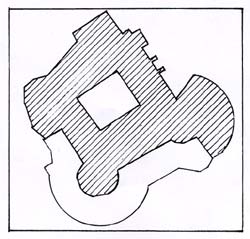![]() Castles
Castles
![]() Castle of Venafro
Castle of Venafro
![]() The
market tower
The
market tower
 |
Castle of Venafro |
Sections
of cyclopean walls dating back to the Samnite period still exist on mount Santa
Croce near Venafro. The layout of the old town copies the division into insulae
typical of the Roman period, and numerous remains of the Roman settlement of Venafrum
have been preserved. The castle itself was raised on pre-existing pre-Roman
structures. The building, which is the result of numerous stratifications,
stands at the edge of the town on the hill of SantíAngelo. It seems that
before 1000 the structure consisted only of an enceinte and keep. Henry V denied
Venafro the use of fortifications. In the Angevin period the castle was adapted
to new defence criteria with the construction of circular towers and barbicans
and the digging of a large moat (only
a section of which still remains). In 1443, Count Francesco Pandone transformed
the military structures into an elegant residence. The life-size frescoes that
reproduce, in bas relief, the Countís horses date back to this period. In the
early 16th century Enrico Pandone built the loggia that faces the
Romanesque church and the Italian-style garden. The stonemasonry features
irregular elements set with an abundant use of mortar. The ancient service
elements include cisterns and wells, ovens and chimneys, latrines and
underground rooms. The military elements are the keep (located uphill from the
main building), numerous internal passageways, various kinds of loopholes (arrow
slits, crossbow slits and harquebus loopholes) and cannon ports.
 |
Castle of Venafro |